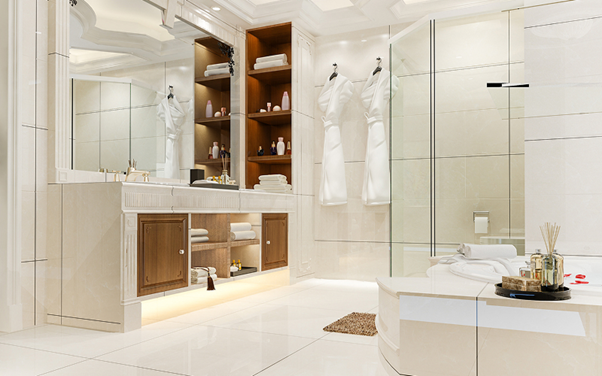Sustainability for eco-conscious homeowners suggests that every room in the house should support long-term environmental responsibility. In Singapore, toilet renovation projects are now frequently guided by considerations such as water efficiency, material reuse, and energy-saving systems. Here are key design strategies that contribute to an environmentally responsible space.
Install Low-Flow Fixtures
Water tools and appliances are crucial in reducing water use. A well-designed eco-friendly bathroom begins with low-flow taps, toilets, and showerheads. These fixtures do not compromise performance with water usage. During toilet renovation in Singapore, interior design professionals recommend fixtures that limit unnecessary water flow while maintaining effective pressure. Over time, this not only benefits the environment but also reduces monthly utility costs.
Choose Water-Efficient Toilet Systems
Standard flush systems consume large amounts of water unnecessarily. Modern alternatives, such as dual-flush toilets or systems with integrated flushing control, allow users to manage water consumption more efficiently. This is a particularly important consideration in Singapore, where water sustainability is a national concern. Interior design practices now regularly incorporate water-saving toilet options to align with green building principles.
Use Recycled or Renewable Materials
Sourcing sustainable materials is another step toward building a green bathroom. Recycled tiles, reclaimed wood, and composite countertops made from reused materials significantly reduce the environmental impact of renovation. During toilet renovation in Singapore, interior design firms advise clients to prioritise surfaces and finishes that carry environmental certifications or are locally sourced to reduce transport emissions. The goal is to create a durable space without depleting natural resources.
Emphasise Natural Light and Ventilation
Good lighting and airflow reduce dependence on artificial systems. Bathrooms designed with large windows or glass panels allow daylight to illuminate the space while improving indoor air quality. Adequate ventilation, whether through window placement or mechanical exhausts, prevents mould growth and reduces the need for chemical cleaners. These design elements contribute to a healthier indoor environment and lower energy use.
Avoid Toxic Finishes and Materials
Eco-conscious design also includes attention to the chemical composition of building materials. Adhesives, sealants, and paints with high levels of volatile organic compounds (VOCs) release toxins that impact indoor air quality. Interior design for sustainable bathrooms involves selecting low-VOC or VOC-free alternatives. This simple change can significantly reduce long-term exposure to harmful substances, especially in small, enclosed spaces.
Integrate Energy-Efficient Lighting
Energy use in the bathroom is tied to lighting. Incorporating LED lighting or motion-sensor systems can reduce power consumption without compromising brightness. In toilet renovation projects across Singapore, interior designers are shifting towards energy-saving solutions that fit modern aesthetics. Using light colours on surfaces to reflect brightness and planning light placement effectively can reduce the need for excess fixtures.
Learn More: 8 Most Popular Bathroom Renovation Singapore Trends
Design for Long-Term Use
Sustainable design enables longevity. Rather than focusing on trends, eco-conscious homeowners should favour neutral palettes, durable materials, and flexible layouts that require fewer updates over time. Built-in storage, sturdy countertops, and timeless fittings reduce the need for frequent replacement, which conserves resources. During toilet renovation, this mindset leads to fewer discarded materials and a more stable design footprint.
Plan Efficient Layouts to Minimise Waste
An efficient layout contributes directly to sustainable construction. Fewer material offcuts, shorter piping lengths, and minimal structural modifications all reduce waste. Interior design professionals in Singapore emphasise precision in measurements and layout planning to prevent unnecessary demolition or rework. Keeping plumbing fixtures close together, for example, reduces installation material and energy use during water heating.
Incorporate Green Cleaning and Maintenance Practices
The design of a sustainable bathroom also influences how it is maintained. Smooth, non-porous surfaces reduce the need for harsh cleaning chemicals, while natural ventilation prevents mildew. Installing adequate storage ensures that eco-friendly cleaning products are easily accessible. A bathroom that is easy to clean using natural methods further supports a low-impact lifestyle.
Reuse What You Can from the Existing Setup
Before initiating a renovation, eco-conscious homeowners should assess what can be retained from the existing bathroom. Elements such as cabinetry, sinks, or mirrors can be refinished rather than replaced. This reduces material waste and avoids the environmental impact of manufacturing new products.
For more information about sustainable bathroom materials, contact Interior Times today.




